


xxxxxAlong with Alfred Tennyson, Robert Browning is regarded as one of the finest Victorian poets, but it was not, in fact, until 1864 with his Dramatis Personae, and his masterpiece The Ring and the Book, four years later, that he gained national fame. Much of his earlier work was seen as obscure, centred around unfamiliar events, and written in a “rough” poetic style. And his attempt to develop the dramatic monologue in which characters speak their thoughts, providing thereby a psychological study of human nature, though perfected in his later compositions, took some time to be accepted. But alongside his dramatic poems went narrative tales and lines of great lyrical beauty, such as The Pied Piper of Hamelin of 1842, and his delightful Home Thoughts from Abroad of 1845. Other works of note included his Bells and Pomegranates and his collection of Dramatic Lyrics. And Browning is remembered too, of course, for his great love affair with Elizabeth Barrett whom he married against her father’s wishes in 1846 and eloped with to Italy. Few romance stories come much better or have a sadder ending.
ROBERT BROWNING 1812 -
Acknowledgements
Browning: detail, by the Italian painter Michael Gordigiani (1835-
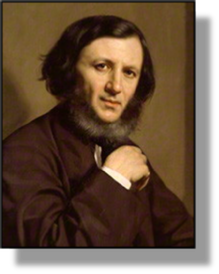 xxxxxThe English romantic poet Robert Browning is especially remembered today on two counts: his delightful short poems -
xxxxxThe English romantic poet Robert Browning is especially remembered today on two counts: his delightful short poems -
xxxxxBrowning was born in Camberwell, London, the son of a clerk at the Bank of England. He was privately educated up to the age of 14, and then, by his own endeavours, developed a deep appreciation of music, painting and, above all, literature (notably the works of Shelley). His early poems, such as Pauline in 1833, and Paracelsus two years later, received scant attention, and his first attempt at a play, Strafford, produced at Covent Garden in 1837, was not well attended, and not kindly reviewed. Then Sordello in 1840, a verse tale set in medieval Italy, was severely criticised for its obscurity, a charge which was to dog him during much of his career. However, the following year he began a series of eight pamphlets, Bells and Pomegranates, in which poems and plays in verse, such as Pippa Passes, My Last Duchess, Soliloquy of the Spanish Cloister, The Bishop Orders His Tomb, and Dramatic Lyrics (which included The Pied Piper of Hamelin of 1842) served to bring his name to the fore, though not immediately so. And by now he had made the acquaintance of some of the most distinguished men of his day, including Wordsworth, Carlyle, and Dickens.
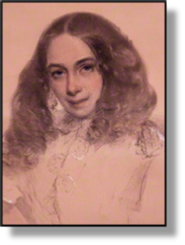 xxxxxIt was towards the end of this series, in 1845, that Browning met Elizabeth Barrett and they fell deeply in love. The following year they married in secret -
xxxxxIt was towards the end of this series, in 1845, that Browning met Elizabeth Barrett and they fell deeply in love. The following year they married in secret -
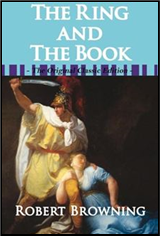 xxxxxIn Londo
xxxxxIn Londo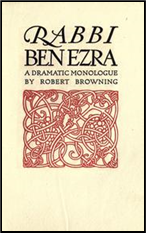 n, Browning took some time to return to his writing, but when he did so in 1864, his Dramatis Personae, which included such works as Rabbi Ben Ezra, Mr Sludge and The Medium, proved surprisingly popular, went to two editions, and brought him his first taste of public recognition. And his next work, The Ring and the Book, produced in four volumes over 1868 and 1869, brought him the fame which had for so long eluded him. Centred around a close psychological study of a murder trial which took place in Rome at the end of the 17th century, this dramatic monologue, seen in turn through the eyes of the participating characters, was enthusiastically received. He became one of the leading literary figures of his day, took his holidays on the continent, and was accepted in London’s high society.
n, Browning took some time to return to his writing, but when he did so in 1864, his Dramatis Personae, which included such works as Rabbi Ben Ezra, Mr Sludge and The Medium, proved surprisingly popular, went to two editions, and brought him his first taste of public recognition. And his next work, The Ring and the Book, produced in four volumes over 1868 and 1869, brought him the fame which had for so long eluded him. Centred around a close psychological study of a murder trial which took place in Rome at the end of the 17th century, this dramatic monologue, seen in turn through the eyes of the participating characters, was enthusiastically received. He became one of the leading literary figures of his day, took his holidays on the continent, and was accepted in London’s high society.
xxxxxIn the 1870s he wrote a number of collections of short poems, as well as long narratives and dramatic monologues. In these he explored and commented on classical literature, as in his Aristophanes' Apology of 1875, and considered a number of contemporary issues, like crime and its causes in his The Inn-
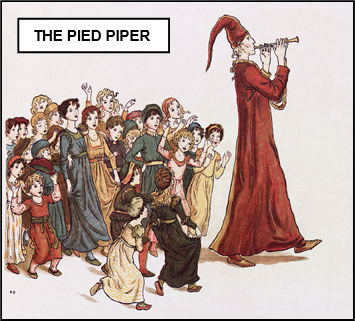 xxxxxAs we have seen, Browning’s claim to fame began with his publication of Dramatis Personae in 1864, and was confirmed with his masterpiece The Ring and the Book, first produced in 1868. Although a number of his works were regarded as obscure, if not downright incomprehensible, his gradual development and mastery of the dramatic monologue -
xxxxxAs we have seen, Browning’s claim to fame began with his publication of Dramatis Personae in 1864, and was confirmed with his masterpiece The Ring and the Book, first produced in 1868. Although a number of his works were regarded as obscure, if not downright incomprehensible, his gradual development and mastery of the dramatic monologue -
xxxxxBrowning died in Venice in December 1889, and was buried in Poets’ Corner in Westminster Abbey. His last volume of poetry, Asolando, was published on the day of his death, and a verse from the epilogue to that work serves as a fitting tribute to its author, a man who was ever honest, helpful and hopeful.
One who never turned his back, but marched breast forward,
Never doubted cloud would break,
Never dreamed, though right were worsted, wrong would triumph,
Held we fall to rise, are baffled to fight better,
Sleep to wake.
xxxxxIncidentally, in a letter of 1868 Browning counters the charge of being deliberately obscure. He wrote: “I never tried to puzzle people, as some critics supposed. On the other hand, I never pretended to offer such literature as should be a substitute for a cigar or a game of dominoes. ……
xxxxx…… Amongst some of his memorable lines are “Roses, roses all the way.” (The Patriot), “Oh to be in England, Now that April’s here.” (Home Thoughts from Abroad), “God’s in his Heaven, All’s well with the World.” (Pippa Passes), and “Grow old along with me, The best is yet to be, The last of life for which the first was made.” (Rabbi ben Ezra). ……
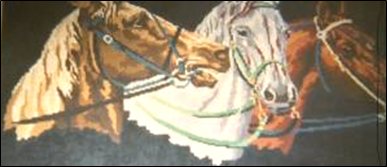 xxxxx…… One of Browning’s most popular poems How They Brought the Good News from Ghent to Aix, begins with the famous lines: “I sprang to the stirrup, and Joris, and he, I galloped, Dirck galloped, we galloped all three”. It is not based on any historical fact, but probably relates to one of the wars the Dutch waged against their Spanish oppressors during the 17th century.
xxxxx…… One of Browning’s most popular poems How They Brought the Good News from Ghent to Aix, begins with the famous lines: “I sprang to the stirrup, and Joris, and he, I galloped, Dirck galloped, we galloped all three”. It is not based on any historical fact, but probably relates to one of the wars the Dutch waged against their Spanish oppressors during the 17th century.
Including:
Elizabeth Barrett
Browning

xxxxxElizabeth Barrett Browning (1806-
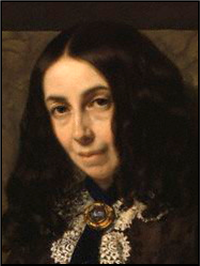 xxxxxElizabeth Barrett Browning (1806-
xxxxxElizabeth Barrett Browning (1806-
xxxxxShe was born into the Barrett family, then living at Coxhoe Hall, Durham, and attended a private school. It was at the age of l5, after the family had moved to Worcestershire, that she fell from her pony and injured her spine. It was quite a serious injury and made the worse by the attitude of her over-
xxxxxA learned and determined young woman who knew her own mind, Elizabeth Barratt had turned to writing at an early age. Her The Battle of Marathon, printed privately, appeared in 1820, and this was followed by a translation of Aeschylus’ drama Prometheus Bound in 1833, and The Seraphim and Other Poems five years later. These and her contributions to a number of periodicals made her known in the literary world, and the publication of her Poems in 1844 (which included The Cry of the Children) firmly established her reputation not only as a poet, but also as a woman deeply concerned about social injustice.
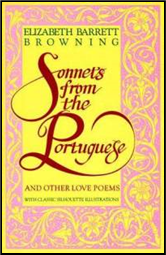 xxxxxHer friendship with Robert Browning came about in 1845 after he had written to her praising her collection of poems. “I love your verses with all my heart, dear Miss Barrett,” he wrote, ”and I love you too.” They were attracted to each other at their very first meeting, and their subsequent marriage and elopement freed her from her father’s domineering influence. Once living in Florence, Italy, her health improved considerably and with her husband’s encouragement she produced some of her finest work. In 1850 she published a much enlarged edition of her Poems.
xxxxxHer friendship with Robert Browning came about in 1845 after he had written to her praising her collection of poems. “I love your verses with all my heart, dear Miss Barrett,” he wrote, ”and I love you too.” They were attracted to each other at their very first meeting, and their subsequent marriage and elopement freed her from her father’s domineering influence. Once living in Florence, Italy, her health improved considerably and with her husband’s encouragement she produced some of her finest work. In 1850 she published a much enlarged edition of her Poems. 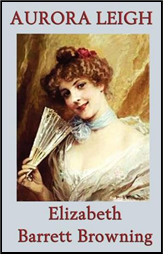 This included Sonnets from the Portuguese, a collection of love lyrics much admired for their musical lyrics and sincerity of feeling. The following year she completed Casa Guidi Windows, Casa Guidi being the place where they were living in Florence. These collections of poems spoke of her love for Italy and revealed her intense sympathy for the Italian independence movement, then on the march. Aurora Leigh, a romantic blank verse melodrama, was published in 1856. It found only moderate favour with the critics, but it proved a huge popular success. It also proved to be her last major work. She was taken ill in the summer of 1861, and died in her husband’s arms. They had been married for just fifteen years.
This included Sonnets from the Portuguese, a collection of love lyrics much admired for their musical lyrics and sincerity of feeling. The following year she completed Casa Guidi Windows, Casa Guidi being the place where they were living in Florence. These collections of poems spoke of her love for Italy and revealed her intense sympathy for the Italian independence movement, then on the march. Aurora Leigh, a romantic blank verse melodrama, was published in 1856. It found only moderate favour with the critics, but it proved a huge popular success. It also proved to be her last major work. She was taken ill in the summer of 1861, and died in her husband’s arms. They had been married for just fifteen years.
xxxxxIncidentally, during their life together Browning had yet to make his name as a poet, whilst his wife had already established an enviable reputation. Browning himself wrote in 1871: “The simple truth is that she was the poet, and I the clever person by comparison.” However, Elizabeth always believed that her husband would one day be regarded as a greater poet than herself, and so it proved to be. ……
xxxxx…… Not surprisingly, over the years the account of their romantic love story, fervently told in their letters to each other, has provided heaven-
xxxxx…… Her Sonnets from the Portuguese of 1850, regarded by many as her finest work, had no connection with the country Portugal. Mrs Browning had a somewhat dark complexion and, as a term of endearment, Browning used to call her “my little Portuguese”. Hence the title of the collection! ……
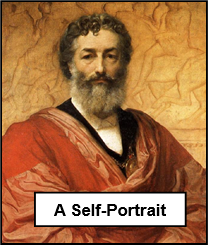 xxxxx…… Shexwas buried in the English Cemetery in Florence and her tomb was designed by the English painter and sculptor Frederick Leighton (1830-
xxxxx…… Shexwas buried in the English Cemetery in Florence and her tomb was designed by the English painter and sculptor Frederick Leighton (1830-
Va-


